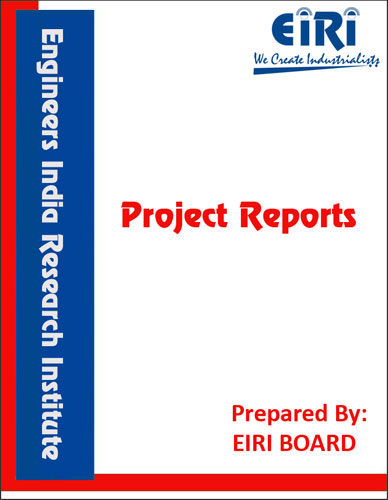TEA & COFFEE PROCESSING AND PACKAGING
The project report includes Present Market Position and Expected Future Demand, Market Size, Statistics, Trends, SWOT Analysis and Forecasts. Report provides a comprehensive analysis from industry covering detailed reporting and evaluates the position of the industry by providing insights to the SWOT analysis of the industry.
We can prepare PROJECT REPORT as per your INVESTMENT PLAN for BANK LOAN REQUIREMENT and INDUSTRY ANALYSIS. All reports are prepared by highly qualified consultants and verified by a panel of experts.
Have Query? Click Here to Chat
Industry Expert is Online, Chat with him for more detail.

The origin of tea is lost in ancient history, although legend dates it at about 2700 BC. The first generally accepted reference to tea is found in a Chinese dictionary from 350 AD which stated that the beverage was used as a medicine for various ils . Tea achieved popularity in the west only during the late seventeenth and eighteenth centuries, although it was brought to Europe in 1559.The first public sale of tea in England was held in 1657. The beverage’s popularity grew, and its trade became an economic mainstay. Today, tea is arguably the most popular beverage in the world.
Black and green tea is the two main types, defined by their respective manufacturing techniques. Green tea is consumed mostly in Japan, China, North Africa and the Middle East; the remainder of the world uses black tea. Oolong tea, found in sorne regions of China, is an intermediate variant between black and green tea. Black and Green teas as lightly flavoured with other botanicals are sometimes seen; these include jasmine tea, scented with jasmine blossoms, and Earl Grey tea, flavoured with bergamot, a type of citrus fruit as lightly flavoured with other botanicals are sometimes seen; these include jasmine tea, scented with jasmine blossoms, and Earl Grey tea, flavoured with bergamot, a type of citrus fruit.
Tea is cultivated primarily in the Asian countries, and world’s largest producers of tea are India, Sri Lanka, and China. In China, tea has been grown since the earliest times and the plant is native to this country.
The botanical name Camellia sinensis refers to the tea plant. However, the plant has a many different varieties, or subspecies which are also cultivated and used in a similar manner. At one time in history, there was significant confusion over whether one or more species of the tea plant existed in nature. However, this issue was cleared up in 1958, when a botanical international agreement was reached and now the prevailing classification is of one species having several varieties or subspecies, among these varieties, at least two types have very important commercial impact.
The tea plant is similar to the coffee plant, in that it is an evergreen tree or bush which grows chiefly in the tropics or in subtropical regions of the world. Tea plants require regular but moderate rainfall and the best teas grow in areas with elevated altitudes lying between 2,000 and 6,500 feet. The Assam tea is commercially the most cultivated of all varieties, the Assam tea, or var. assamica, has this distinction because it thrives best in tropical areas and has low resistance to cold climes. Yielding lower quantities of tea when compared to the Assam tea, the China tea, or var. sinensis, however is considered to produces a much more delicately flavored beverage and it is prized for this reason. The Chinese variety is also able to withstand much colder temperatures than the Assam variety at least for brief periods and thus can be grown at higher altitudes. Tea cultivation also reached the new world, during the 1800s, the China tea variety was cultivated as a major plant in the state of South Carolina, however, high labor costs made the plantations economically unsound and such attempts were abandoned. The plants still survive in this area to this day, though not cultivated in any large scale or commercially.
INTRODUCTION
PROPERTIES
TEA GROWING AND PROCESSING:-
APPLICATION & USES OF TEA EXTRACT
EXTRACTION AND ISOLATION OF CAFFEINE FROM TEA LEAVES
FIGURE 3. STRUCTURE OF CELLULOSE.
PROTEINS AND PIGMENTS
MARKET POSITION OF TEA INDUSTRY
MEDIUM TERM OUTLOOK TO 2023
DETAILED EXPORT DATA OF BULK TEA
PRESENT MANUFACTURERS
PROCESSING
WITHERING PROCESSES OCCURRING IN THE GREEN LEAF
LEAF HANDLING FROM THE FIELD TO THE FACTORY
TEA PACKAGING
CTC TEA MANUFACTURING – PROCESS FLOW DIAGRAM
COFFEE
MARKET POSITION OF COFFEE
COFFEE EXPORT VOLUMES WORLDWIDE IN DECEMBER 2015,
BY LEADING COUNTRIES (IN 1,000 60-KILO SACKS)
PRESENT MANUFACTURERS OF COFFEE
TOP COFFEE BRANDS IN INDIA
THE COFFEE SEED
PRODUCTION OF COFFEE AND COFFEE-BASED BEVERAGES
STEAM-TREATED AND MONSOONED COFFEES
COFFEE ROASTING
COFFEE BREWING
NATURAL COFFEE CONSTITUENTS
GREEN COFFEE CHEMICAL COMPOSITION
VOLATILE COMPOUNDS IN GREEN COFFEE
CHANGES IN COFFEE CHEMICAL COMPOSITION DURING ROASTING
VOLATILE COMPOUNDS IN ROASTED COFFEE
CHANGES IN COFFEE CHEMICAL COMPOSITION DURING
SPECIAL COFFEE PROCESSING
CHEMICAL COMPOSITION OF COFFEE BREW
INCIDENTAL COFFEE CONSTITUENTS
POLYCYCLIC AROMATIC HYDROCARBONS
PESTICIDE RESIDUES
CONCLUDING REMARKS
INSTANT COFFEE PRODUCTION PROCESS
PROCESSING: SCHEMATIC OVERVIEW
RESIDUES GENERATED IN THE COFFEE INDUSTRY
COFFEE INDUSTRY RESIDUES APPLICATIONS
COFFEE SILVERSKIN (CS)
SPENT COFFEE GROUNDS (SCG)
PROPOSED UTILIZATION OF COFFEE INDUSTRIAL RESIDUES
SUPPLIERS OF COFFEE PROCESSING PLANT & EQUIPMENTS
SUPPLIERS OF TEA PROCESSING PLANT & EQUIPMENTS
MANUFACTURERS/SUPPLIERS OF PLANT & MACHINERY
SPRAY DRYERS
SUPPLIERSOF RAW MATERIALS
APPENDIX – A :
1. COST OF PLANT ECONOMICS
2. LAND & BUILDING
3. PLANT AND MACHINERY
4. FIXED CAPITAL INVESTMENT
5. RAW MATERIAL
6. SALARY AND WAGES
7. UTILITIES AND OVERHEADS
8. TOTAL WORKING CAPITAL
9. COST OF PRODUCTION
10. PROFITABILITY ANALYSIS
11. BREAK EVEN POINT
12. RESOURCES OF FINANCE
13. INTEREST CHART
14. DEPRECIATION CHART
15. CASH FLOW STATEMENT
16. PROJECTED BALANCE SHEET



